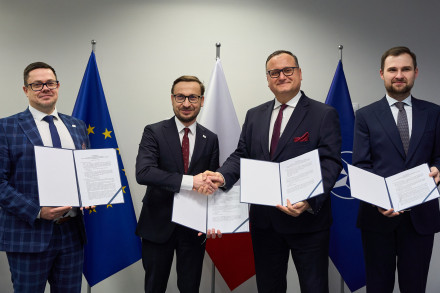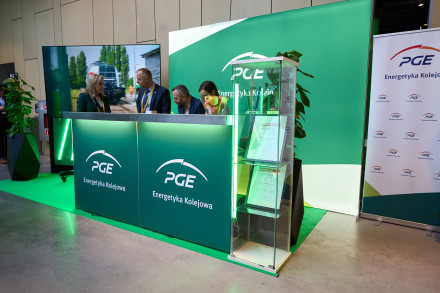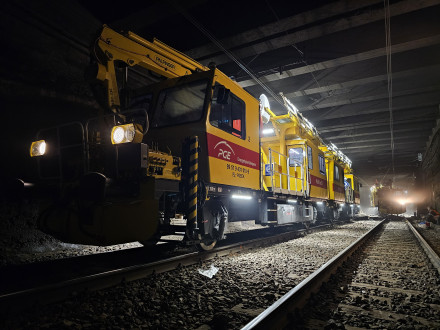2.5 thousand journeys powered in two months. See how Europe's largest traction energy storage works
08.09.2021, 7min read
The largest traction energy storage in Europe has been in operation for 2 months in Garbce near Żmigród (Lower Silesia Voivodeship, Poland). Since the official launch, which took place on 1 July, the facility built by PKP Energetyka has already powered more than 2.5 thousand passages of regional and long-distance passenger and freight train carriages. Watch the film about this energy storage facility explaining how it works and showing the unique technologies it uses.
The operation of the storage facility of 5.5 MW of power with useful capacity of 1.2 MWh was inaugurated at the beginning of this year's summer holidays, after several months of test run. Since then, this system has enhanced the safety and quality of traction power supply and has balanced the power collected from the National Power System by the traction energy substation where it was built. The storage facility is charged slowly, with low power from the distribution grid, and when a train appears on the tracks, it quickly releases a large amount of accumulated energy, at the same time ensuring high quality of energy in the power grid. In addition, it improves the energy quality in the overhead contact line. The facility consists of five containers – four of them contain as much as 4.2 thousand modern lithium-ion battery cells, and the fifth one – an innovative electronic power converter operating directly on direct voltage. The operation of the entire system is supervised by the advanced SCADA (Supervisory Control and Data Acquisition) IT system, which ensures optimum operation as well as gathers data and parameters of the system operation. More information about the operation of individual storage facility components in Garbce is provided in the video prepared by PKP Energetyka.
The railway “power bank” operating in the Lower Silesia is the only such facility in Europe. This is the first large energy storage operating with 3 kV DC grid. Similar infrastructure is operated e.g. in Japan, but its capabilities and importance for railway power grid safety are smaller. The capacity of the PKP Energetyka energy storage would be sufficient to power 55 thousand traditional 100 Watt bulbs, 110 thousand dishwashers or 2 thousand electric ovens.
“We continuously monitor the operation of the power storage which increases the operating efficiency and safety of PKP Energetyka power distribution infrastructure. We can be proud of the results of our work, especially that the Garbce power storage facility is not based on ready-made solutions, "off the shelf", but has been developed practically from scratch. It is a system characterised by unique functionalities and parameters" – emphasises Professor Grzegorz Benysek who has led the research and development works of the energy storage facility project.
The Garbce facility is also crucial for increased use of renewable energy sources in the Polish railways. Photovoltaic systems will be developed in its immediate vicinity. Electricity generated by them will additionally power the storage facility. Ultimately, PKP Energetyka plans to develop approx. 300 installations similar to the one in Garbce. Every one of them will be a part of a wider power supply ecosystem – together with the traction energy substation and a renewable energy source (solar or wind farm), creating a Local Balancing Area (LBA). The development of further energy storage facilities will be crucial for the reinforcement of the railway power supply system in Poland due to its constantly increasing demand for electricity. The implementation of the PKP Energetyka plans will be also supported by the Green Railway Program – a sectoral initiative of railway industry entities and members of the Railway Energy Efficiency Centre (CEEK), assuming that in 2030 85% of the railway transport power supply will be powered by RES-generated traction energy. Modern energy storage facilities, among other things, will help to ensure a balance in the system using distributed and unevenly operating renewable energy sources.






